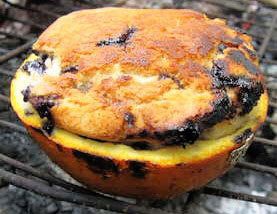Trilliums – The Gentle Beauty of Northwoods Wildflowers
Seasons in the Northwoods of Wisconsin and Upper Michigan can be defined by colors, with the varying shades delighting the eyes of nature lovers and the lenses of photographers throughout the year. The season of white snow is coming to an end, spring is in the air, and the forests are drinking in the sun and warmth. And just as the forests turn back to a canopy of green and the lakes begin to sparkle blue, a white hue will begin to dot the landscape again, this time in the shade of the majestic trillium.
Spring in the Northwoods is always a breath of fresh air after a long and cold winter. One of the first signs of spring is always the appearance of trilliums, also called the “white wake-robin” because it is one of the earliest blooming flowers in the area. These perennial beauties spring up throughout the forests and along the roadsides, typically blooming in April and May.
Trilliums – Endurance & Delicacy Combined
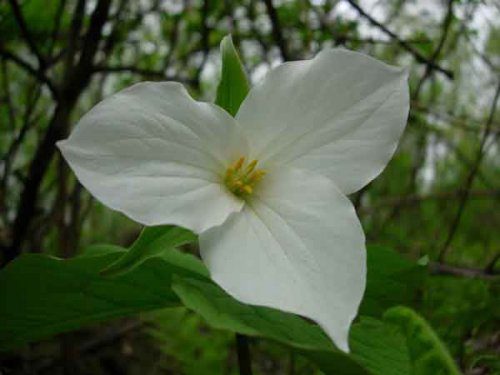 The white trillium is part of the lily family, and a favorites of locals and visitors alike. They prefer shady areas with only partial sunlight, and are a rather delicate species. Although the plant can live for over 70 years, it takes about 17 years to mature and picking the flower with its leaves can prevent it from re-growing. For this reason, many counties and states consider it an endangered plant and make it illegal to pick in the wild.
The white trillium is part of the lily family, and a favorites of locals and visitors alike. They prefer shady areas with only partial sunlight, and are a rather delicate species. Although the plant can live for over 70 years, it takes about 17 years to mature and picking the flower with its leaves can prevent it from re-growing. For this reason, many counties and states consider it an endangered plant and make it illegal to pick in the wild.
In fact, there are 8 different species of trilliums in Michigan, and 4 of these are endangered. Despite this, trilliums seem to thrive in the local area, and coming across a blanket of the beauties while enjoying a forest stroll is not unusual. However, they do only bloom for about 2 to 3 weeks in the early spring, and this is not a sight you want to miss!
The Coming of Spring in the Northwoods
Whitetail deer are particularly fond of this 3-petaled wildflower, and it has a long history in the Native American culture. The root of the trillium is said to be an effective antiseptic and antispasmodic alternative medication, and many claim that it can work wonders for reducing swelling of the eyes and in easing rheumatic joints.
Although picking trilliums is taboo if not illegal, and we can’t speak personally to its medicinal purposes, wildflower lovers can still enjoy the poetry of this magnificent beauty. As it wakes the robins from their winter slumber, it also awakens a new appreciation of nature in those that catch a glimpse of trilliums sprouting up from the forest floor. The spring season in itself tends to fill us with a sense of hope and rebirth and the white petals of the trillium seem to embody this completely.
Enjoy a Spring Getaway to the Northwoods!
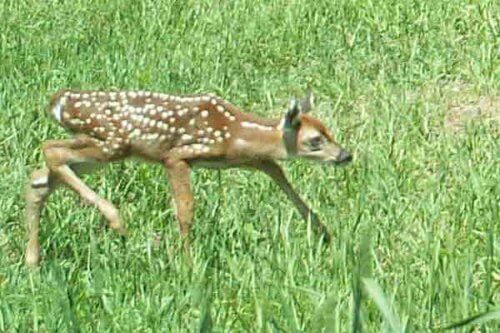 When you are ready to shake off that cabin fever from the long winter and enjoy the fresh air of spring, the Northwoods is the ideal destination. From a romantic weekend for two to a family nature vacation, The Wilderness Reserve cabins are a great choice. Each cabin boasts its own private lake with a spectacular view, and you can’t get any more private than this. And with 5,500 acres of forested land just brimming with wildflowers and wildlife, The Wilderness Reserve is a nature lover’s dream come true!
When you are ready to shake off that cabin fever from the long winter and enjoy the fresh air of spring, the Northwoods is the ideal destination. From a romantic weekend for two to a family nature vacation, The Wilderness Reserve cabins are a great choice. Each cabin boasts its own private lake with a spectacular view, and you can’t get any more private than this. And with 5,500 acres of forested land just brimming with wildflowers and wildlife, The Wilderness Reserve is a nature lover’s dream come true!
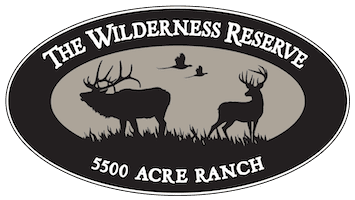
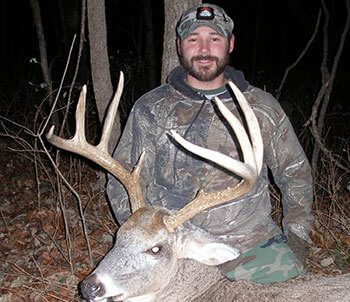 Brian attacks the challenge of an unforgettable experience for each hunter. This should come as no surprise because he brings that same level of excitement to every task he does. One conversation with this big game guide and you instantly feel the bigger-than-life passion that Brian has for everything outdoors. This is quite contagious, infecting all those around him with the same deep appreciation for hunting and
Brian attacks the challenge of an unforgettable experience for each hunter. This should come as no surprise because he brings that same level of excitement to every task he does. One conversation with this big game guide and you instantly feel the bigger-than-life passion that Brian has for everything outdoors. This is quite contagious, infecting all those around him with the same deep appreciation for hunting and  You may wonder how Brian can fit all this in, but such an energetic person who craves that fresh air and the excitement of the wilderness will always find a way. Brian also participates with the Land O’Lakes Recreation Group, local Musky leagues, and an archery league with Northern Waters. And of course, spends a good deal of time out on the waters for that big catch or hunting grouse, ducks, geese, and whitetails.
You may wonder how Brian can fit all this in, but such an energetic person who craves that fresh air and the excitement of the wilderness will always find a way. Brian also participates with the Land O’Lakes Recreation Group, local Musky leagues, and an archery league with Northern Waters. And of course, spends a good deal of time out on the waters for that big catch or hunting grouse, ducks, geese, and whitetails.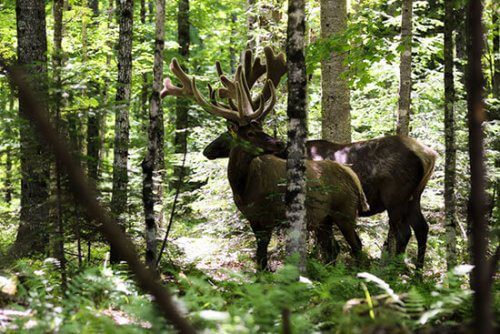 A great example of this is meal times. Hunters are treated to three meals a day in the
A great example of this is meal times. Hunters are treated to three meals a day in the 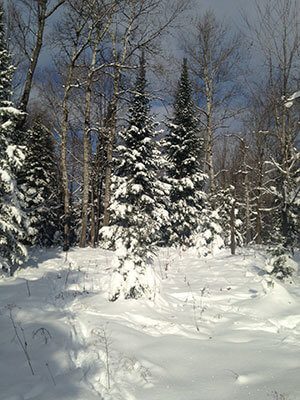 As cross country skiing grows in popularity, the options for types of skis grows as well. You don’t have to be limited to groomed trails, or by speed. There are skis available for almost any terrain and challenge level you could want!
As cross country skiing grows in popularity, the options for types of skis grows as well. You don’t have to be limited to groomed trails, or by speed. There are skis available for almost any terrain and challenge level you could want!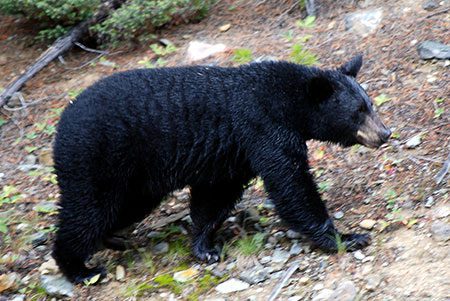 Black bears actually go through 5 stages of activity levels throughout the year – hibernation, walking hibernation, normal activity, hyperphagia, and fall transition. During fall transition, much like fish and other animals, the bears eat excessively to bulk up for the coming winter. At the end of this period, they actually stop eating, even before hibernation begins, and focus on drinking liquids to expel waste. They begin sleeping more and more, sometimes only awakening and moving around for 3-4 hours a day.
Black bears actually go through 5 stages of activity levels throughout the year – hibernation, walking hibernation, normal activity, hyperphagia, and fall transition. During fall transition, much like fish and other animals, the bears eat excessively to bulk up for the coming winter. At the end of this period, they actually stop eating, even before hibernation begins, and focus on drinking liquids to expel waste. They begin sleeping more and more, sometimes only awakening and moving around for 3-4 hours a day. Looking at the forest as a whole, most people don’t consider the individual trees that make up the view. In fact, it’s only because of the wonderful diversity of trees in the Midwest that the fall colors are so stunning. Each type of tree has its own hue, and, as discussed above, can be different every year so no two autumn forests are the same.
Looking at the forest as a whole, most people don’t consider the individual trees that make up the view. In fact, it’s only because of the wonderful diversity of trees in the Midwest that the fall colors are so stunning. Each type of tree has its own hue, and, as discussed above, can be different every year so no two autumn forests are the same.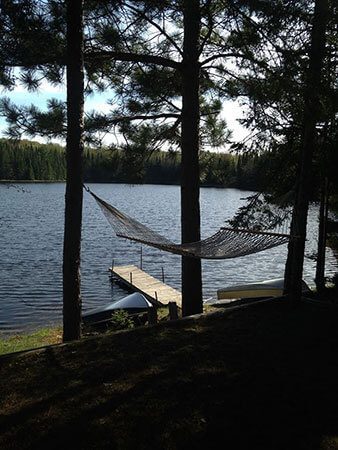 What better way to strengthen your family bonds than a wilderness family vacation? No matter the season, your family will enjoy the inspiring
What better way to strengthen your family bonds than a wilderness family vacation? No matter the season, your family will enjoy the inspiring 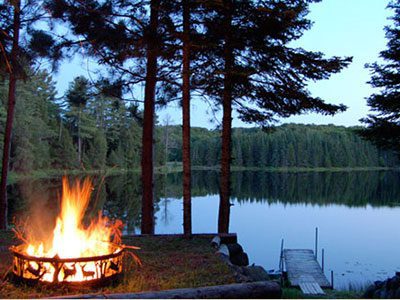 Traditional campfire cooking requires the chef to venture out into the forest to find just the right branch for a cooking stick. If it’s too thin, you risk dropping your treats in the fire and too thick means a gaping hole in your dinner. Whittle the end of the chosen branch to a point, and get rid of any twigs or leaves. Make sure your stick is long enough that you aren’t risking burns, but not too long that you lose control of the exact placement over the fire of the food. Or you can choose to go the city slicker way and buy a metal cooking stick – we strongly recommend wood for the best flavor and true sportsman bragging rights!
Traditional campfire cooking requires the chef to venture out into the forest to find just the right branch for a cooking stick. If it’s too thin, you risk dropping your treats in the fire and too thick means a gaping hole in your dinner. Whittle the end of the chosen branch to a point, and get rid of any twigs or leaves. Make sure your stick is long enough that you aren’t risking burns, but not too long that you lose control of the exact placement over the fire of the food. Or you can choose to go the city slicker way and buy a metal cooking stick – we strongly recommend wood for the best flavor and true sportsman bragging rights!